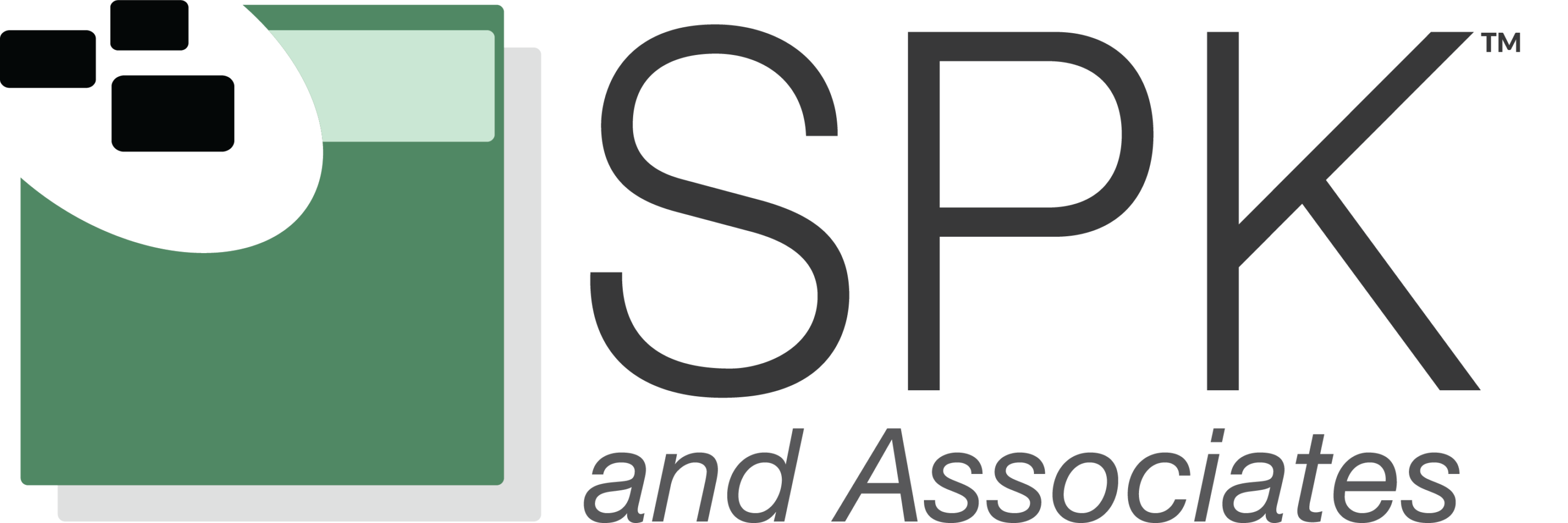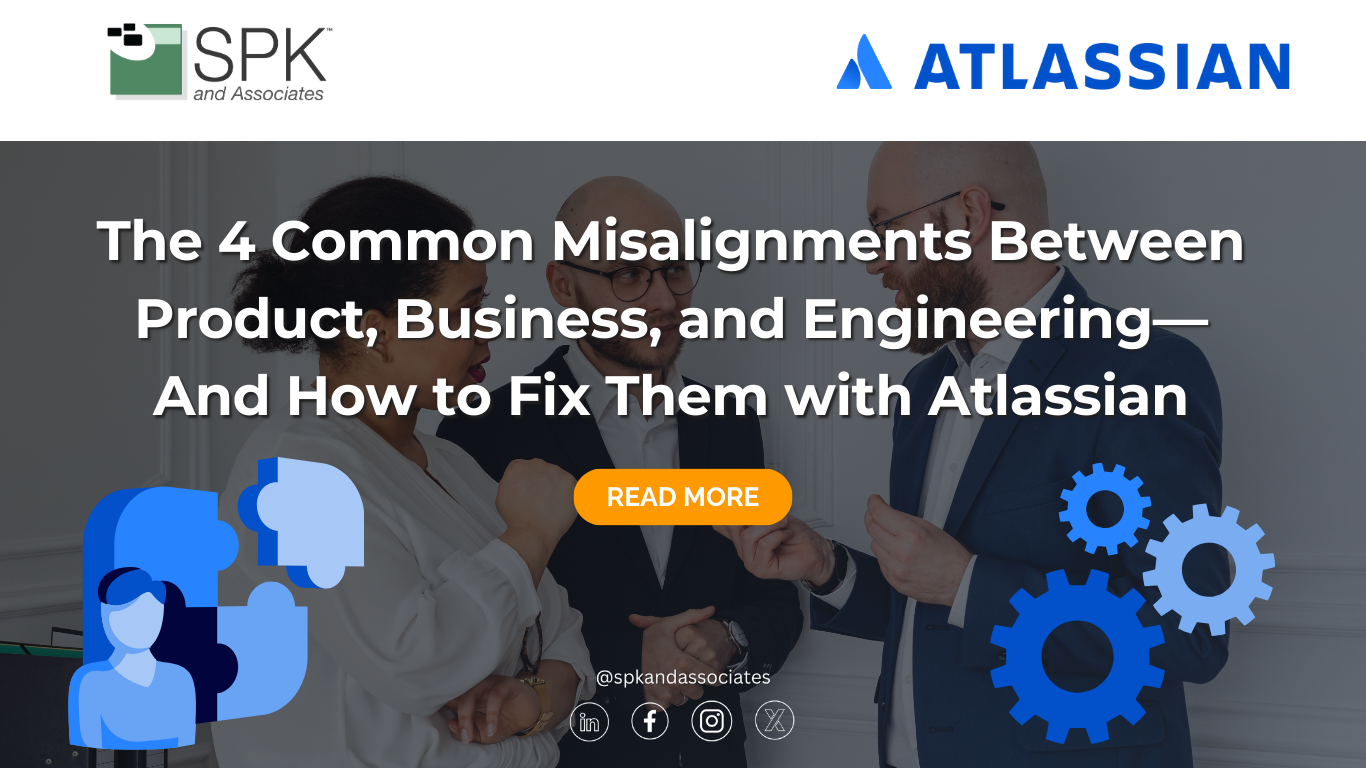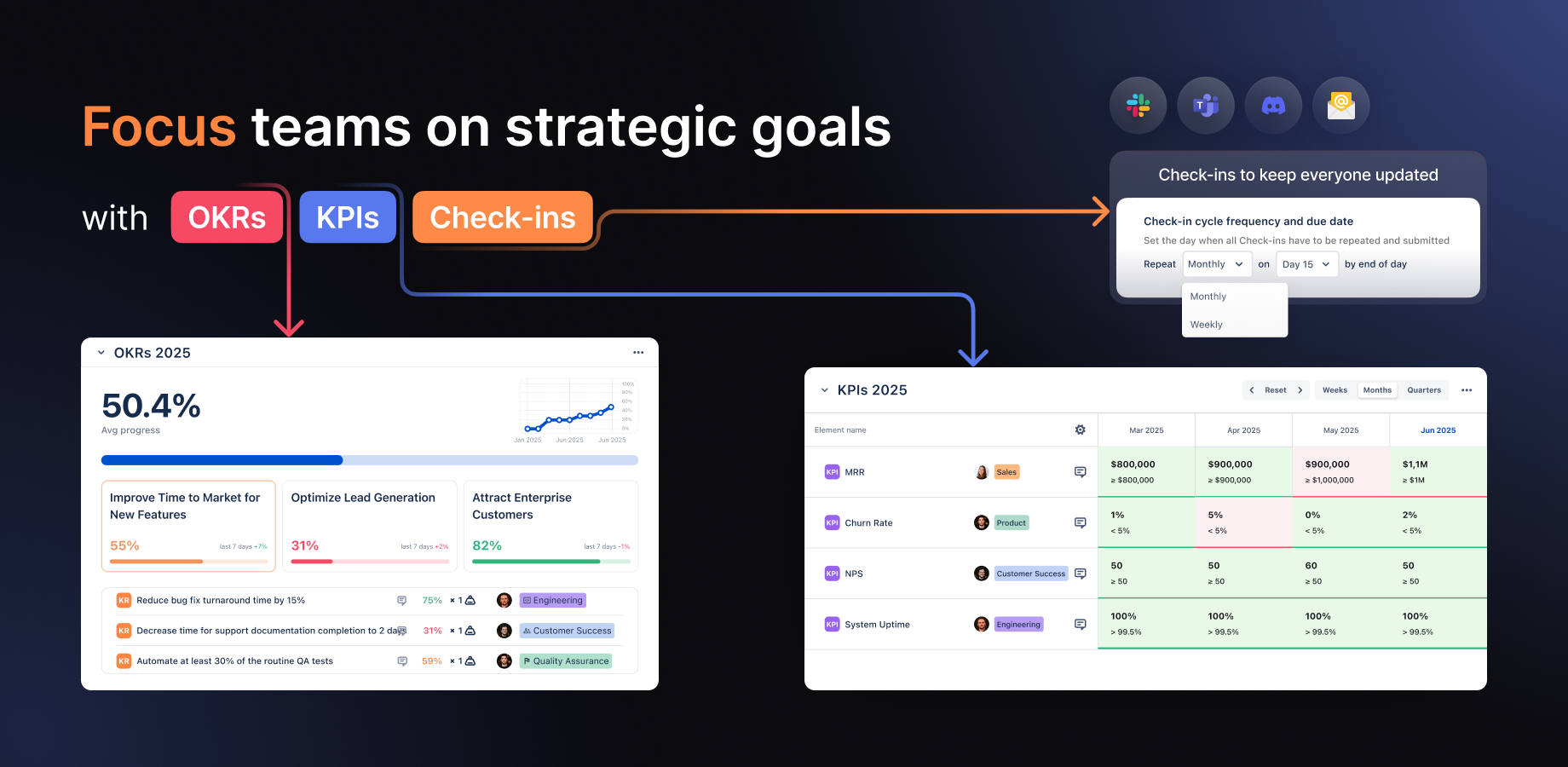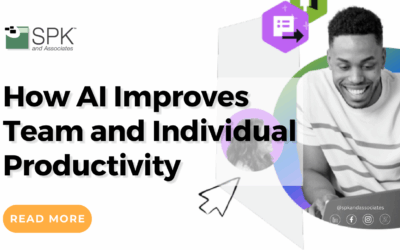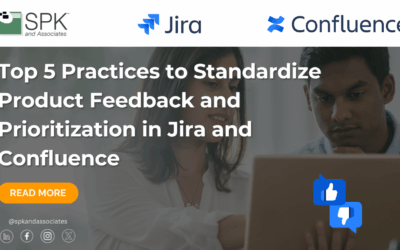What does the average planning meeting look like for a product development company? Product managers are likely eager to introduce innovations and customer-driven features. Engineers are waving red flags about technical debt, scalability issues, and quality risks. Meanwhile, business leaders are pushing for faster delivery and measurable impact on revenue. Everyone in the room is smart, committed, and doing their job. However, they often walk away feeling misaligned.
This is the collaboration paradox. Teams have competing priorities, even when they share the same goals: delivering value, growing the business, and building great products. Alignment does not mean forcing everyone to see the world the same way. It means creating shared visibility, shared context, and shared accountability. Atlassian provides the connective tissue to make this possible. Let’s explore how these tools help teams unify strategy, execution, and outcomes so friction turns into focus.
Common Misalignment: Different Definitions of Success
Success can look different depending on your role. For example, business leaders focus on revenue, market share, and competitive edge. Product teams prioritize customer outcomes and roadmap delivery. Meanwhile, engineering teams want stability, scalability, quality, and velocity. Without shared metrics and visibility, each group feels the others don’t quite get it. This creates frustration due to misaligned expectations.
How Atlassian Tools Help with Alignment
Atlassian tools help teams anchor their work in shared outcomes.
- Use Jira Product Discovery to capture business goals, customer insights, and strategic initiatives. Connect them directly to technical work.
- Create a shared OKR dashboard in Jira or Confluence, so all teams can see how epics and stories align with quarterly or annual goals.
- Adopt Program and Portfolio tools like BigPicture from Appfire to connect strategy to execution, forecast value delivery, and track progress across multiple teams.
When everyone uses the same system to define success, alignment becomes significantly easier.
Communication Gaps and Lost Context
Important discussions can happen anywhere. This includes spreadsheets, presentations, and conversations that never extend beyond a quick hallway chat. Due to this, engineers easily lose track of why decisions were made, and executives lose track of how delivery is progressing. Information gets buried in chat threads, email chains, and scattered documents. There is no single source of truth.
How Atlassian Tools Bridge the Communication Gap
Atlassian tools unify communication, context, and project details.
- Centralize communication in Confluence. Product briefs, user research, release notes, meeting notes, and retrospectives all live in one organized, searchable place.
- Use Jira Automation and Confluence macros to automatically link documentation to active work so context is always visible.
- Implement Atlassian Rovo and Loom to share asynchronous updates that blend video context with documented decisions and traceable records.
These features reduce context switching and ensure teams stay informed without unnecessary meetings.
Prioritization and Resource Conflicts
Most organizations desire speed, stability, and innovation, but without a transparent prioritization system, teams must debate which is most important. This leads to teams struggling to consistently deliver value.
How Atlassian Tools Help Prioritize Resources
Atlassian provides structure to collaborative prioritization.
- Use Jira Plans to visualize dependencies and capacity before making commitments. This forces clarity around trade-offs.
- Run backlog refinement sessions in Jira Product Discovery, where business, product, and engineering score initiatives by value, effort, and impact.
- Integrate Jira Service Management so customer and business feedback flows directly into backlog discussions.
This approach creates a shared understanding of priorities and prevents misalignment before it starts.
Broken Feedback Loops
Broken feedback and learning loops lead to engineers rarely seeing the business outcomes of the work they delivered, and stakeholders rarely seeing the technical effort behind a release. In addition to this, the lessons learned between releases can get lost or may never be documented. Without feedback loops, organizations repeat mistakes instead of accelerating improvement.
Feedback Loops with Atlassian
Atlassian tools create continuous visibility into performance and outcomes.
- Use Confluence retrospectives to capture lessons learned and link them directly to Jira issues for traceability.
- Build measurable feedback loops by connecting Jira issues to customer satisfaction, uptime metrics, and business KPIs.
- Use Atlassian Analytics to visualize the full picture from feature release to business results such as revenue, adoption, or churn reduction.
These features give everyone clarity around what worked, what didn’t, and what needs to change in the future.
Aligning Product, Business, and Engineering with Atlassian
Misalignment is not a failure, but rather a sign that systems, data, and goals are disconnected. When business, product, and engineering teams have shared visibility, shared context, and shared language, alignment becomes natural. Atlassian tools create the foundation for this alignment. Jira ties work to strategy while Confluence anchors documentation and decisions. Jira Product Discovery organizes and prioritizes ideas, and Jira Align connects strategy to execution at scale. Together, these tools transform friction into flow.
If you are ready to connect strategy, delivery, and results, contact SPK and Associates today. Our Atlassian experts can help you turn silos into synergy and build a foundation for sustained product excellence.

